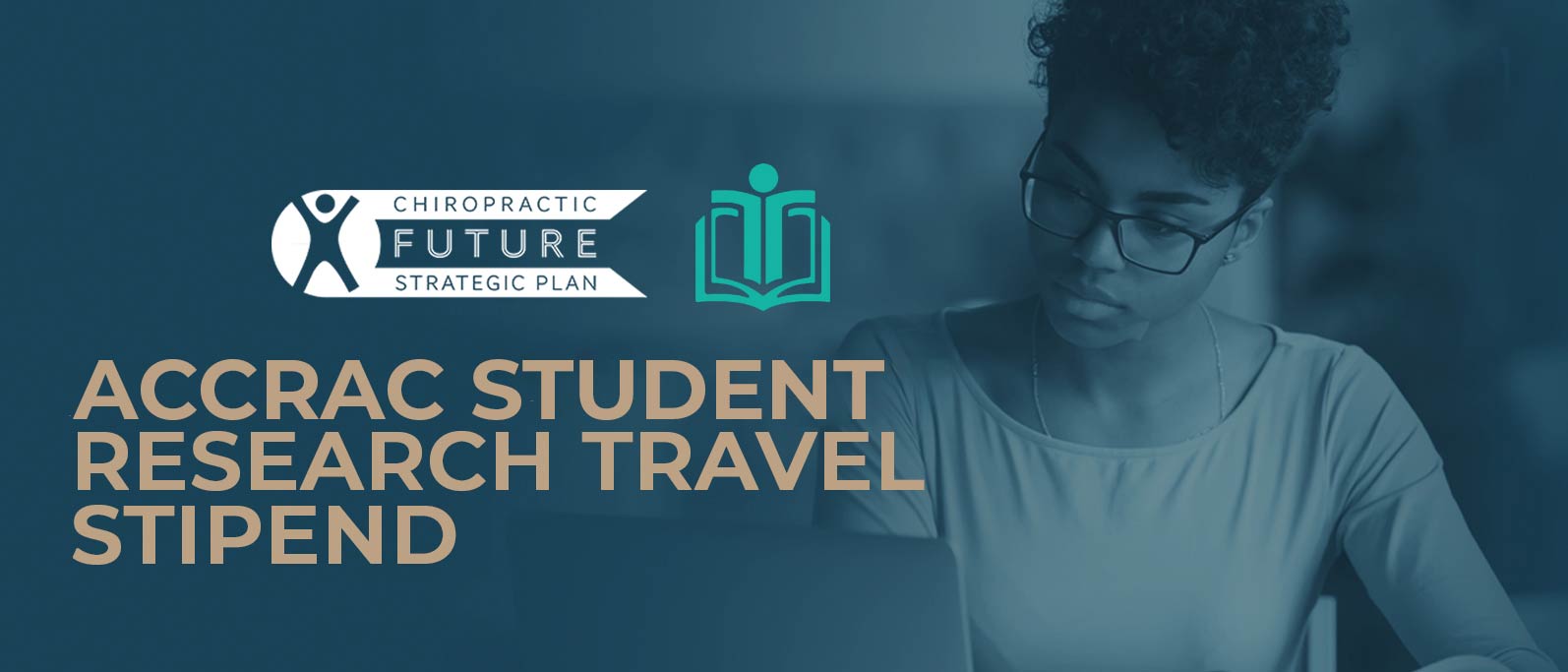ACCRAC Student Research Stipend

The ACCRAC conference is an excellent opportunity for students to network with professionals and peers from around the world, learn about the latest research and advancements in chiropractic care, and gain valuable experience presenting in a professional setting. By presenting your research at this conference, you can establish yourself as a thought leader in the industry and make meaningful contributions to the field.
This stipend is intended to help cover the cost of travel and lodging, making it easier for you to attend and showcase your hard work and dedication to the field.
Are you passionate about showcasing your groundbreaking research in chiropractic care? The esteemed ACCRAC conference is the perfect platform for you to present your findings, connect with industry leaders, and gain invaluable experience.
To support your journey, we’re offering a stipend designed to ease the financial burden of travel and lodging. Our comprehensive stipend encompasses coverage for registration, travel, and lodging expenses throughout the conference duration, all up to a pre-approved amount.
Why Attend ACCRAC?
- Networking: Engage with professionals and peers from around the world.
- Learning: Discover the latest research and advancements in chiropractic care.
- Experience: Gain crucial experience presenting in a professional setting.
- Recognition: Establish yourself as a thought leader and contribute meaningfully to the field.
ELIGIBILITY AND APPLICATION DETAILS
To be eligible for a stipend, applicants must meet the following criteria:
- Enrollment: Students must be enrolled in at least 12 credit hours and actively pursuing a Doctor of Chiropractic (D.C.) degree at a U.S.-based chiropractic institution at the time of abstract submission. Proof of enrollment must be included with the stipend application.
- Abstract Submission: Students must submit an abstract to the ACCRAC Conference by September 1, 2025.
- Stipend Application: Students must submit their stipend application to Chiropractic Future by September 30, 2025.
- Abstract Acceptance: Abstracts must be accepted by ACCRAC. Once accepted, students must forward their abstract acceptance email to info@chiropracticfuture.org no later than November 15, 2025.
Our selection committee will carefully review all submissions and reach out to the selected candidates.
Don’t miss this chance to advance your career and showcase your research at the ACCRAC conference. Apply now and take the next step in your professional journey!
2025 Recipients

Edgardo Samuel Perez Martinez
Universidad Central del Caribe
Abstract: Atlanto-Occipital Assimilation Not Initially Identified on a Plain Radiograph Exam – A Case Report Describing the Chiropractic Treatment Outcomes of a Rare Craniovertebral Anomaly

Dr. Quan Zhang
Palmer College
Abstract: The Impact of Alternative Medicine on Microgravity-Induced Physical Ailments – A Literature Review

Michael Robles
Southern California University of Health Sciences
Abstract: Comparative Cost Analysis of Neck Pain Treatments for Medicare Beneficiaries
2024 Recipients

George Zakhary
Southern California University of Health Sciences, California
Abstract: Trends in Utilization of Non-Pharmacological Pain Therapies under Medicare

Holli Kells
Northwestern Health Sciences University, Minnesota
Abstract: Mapping Chiropractic Services within US Federally Qualified
Health Centers

Rachiel Torrence
Texas Chiropractic College, Texas
Abstract: Comparing Balance and Kinematic Effects of Standard Athletic
Taping of the Ankle during Jumping Activities

Carol Longo
Texas Chiropractic College, Texas
Abstract: Exploring the Acute Effects of Spinal Manipulation on Handgrip Strength and Reaction Time Relative to Anxiety and Neck Pain Level

Dr. Parth Trivedi
Life Chiropractic College West, California
Abstract: Applications of Eye-Tracking Technology in Chiropractic:
Current Evidence and Example Data

